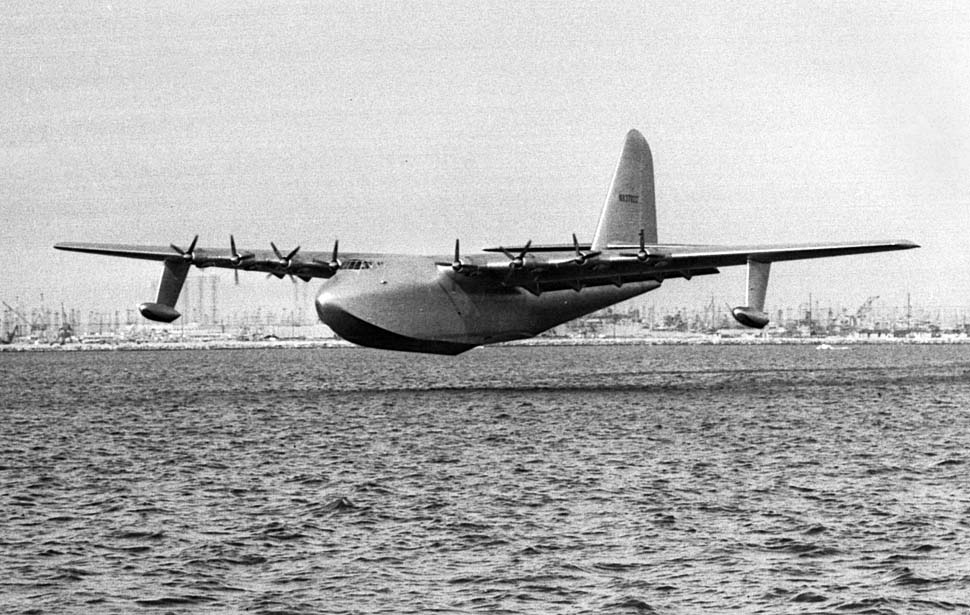
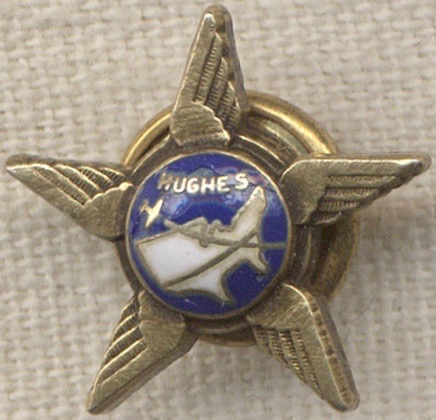 2 November 1947: Howard Hughes’ Hughes Aircraft Company H-4 Hercules flying boat, NX37602, made its first and only flight at the harbor of Los Angeles, California. The new media called it “The Spruce Goose” due to its strong but lightweight wooden construction. As with the famous de Havilland DH.98 Mosquito fighter-bomber, the use of wood freed up valuable metal alloys during World War II.
2 November 1947: Howard Hughes’ Hughes Aircraft Company H-4 Hercules flying boat, NX37602, made its first and only flight at the harbor of Los Angeles, California. The new media called it “The Spruce Goose” due to its strong but lightweight wooden construction. As with the famous de Havilland DH.98 Mosquito fighter-bomber, the use of wood freed up valuable metal alloys during World War II.
Conceived by Henry J. Kaiser, the airplane was initially called the HK-1. It was designed to carry as many as 750 fully-equipped soldiers on transoceanic flights.
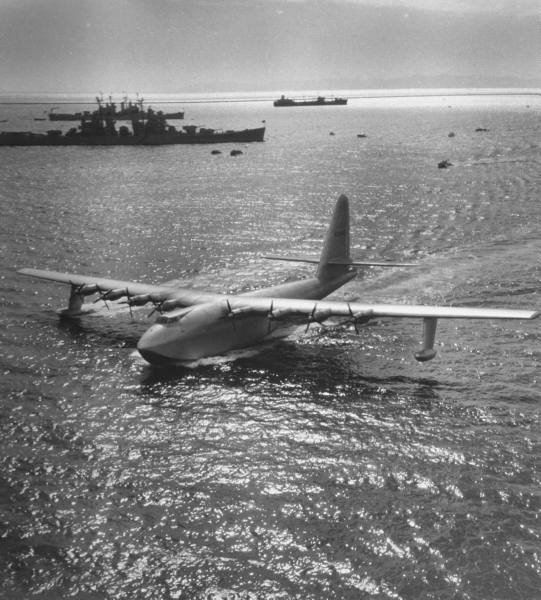
The H-4 is 218 feet, 8 inches (66.650 meters) long with a wingspan of 320 feet, 11 inches (97.815 meters). Its height is 79 feet, 4 inches (24.181 meters). The Hercules’ designed loaded weight is 400,000 pounds (181,437 kilograms).
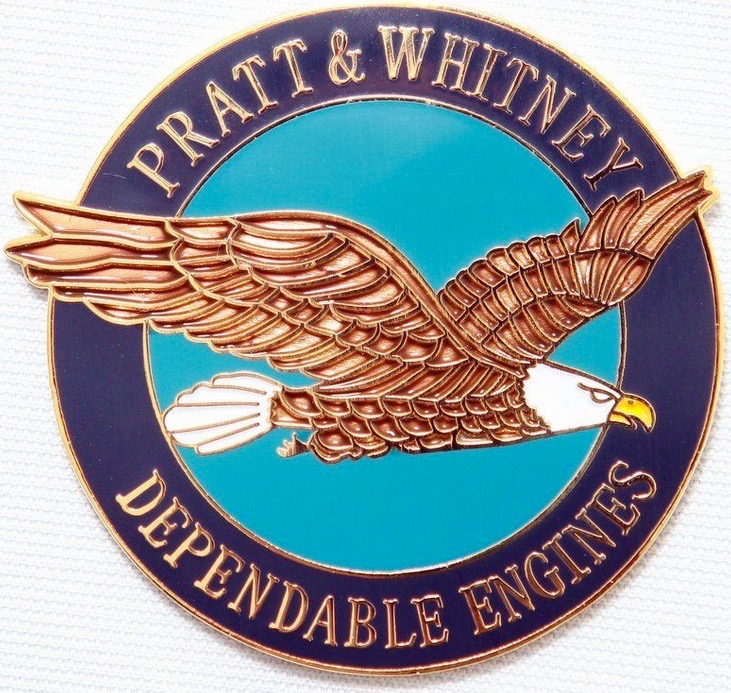 The flying boat was powered by eight air-cooled, supercharged 4,362.49-cubic-inch-displacement (71.489 liter) Pratt & Whitney Wasp Major VSB11-G (R-4360-4A) four-row 28-cylinder radial engines with a compression ratio of 7:1. The R-4360-4A had a Normal Power rating of 2,500 horsepower at 2,550 r.p.m. to 5,000 feet (1,524 meters), 2,200 horsepower at 2,550 r.p.m. to 14,500 feet (4,420 meters), and a Takeoff rating of 3,000 horsepower at 2,700 r.p.m. The Military Power rating was also 3,000 horsepower at 2,700 r.p.m., to an altitude of 1,500 feet (457 meters), then decreased to 2,400 horsepower at 2,700 r.p.m. to 13,500 feet (4,115 meters). The engines turned four-bladed Hamilton Standard propellers with a diameters of 17 feet, 2 inches (5.232 meters) through a 0.425:1 gear reduction. The R-4360-4A was 8 feet, 0.75 inches (2.457 meters) long, 4 feet, 4.50 inches (1.334 meters) in diameter, and weighed 3,390 pounds (1,538 kilograms).
The flying boat was powered by eight air-cooled, supercharged 4,362.49-cubic-inch-displacement (71.489 liter) Pratt & Whitney Wasp Major VSB11-G (R-4360-4A) four-row 28-cylinder radial engines with a compression ratio of 7:1. The R-4360-4A had a Normal Power rating of 2,500 horsepower at 2,550 r.p.m. to 5,000 feet (1,524 meters), 2,200 horsepower at 2,550 r.p.m. to 14,500 feet (4,420 meters), and a Takeoff rating of 3,000 horsepower at 2,700 r.p.m. The Military Power rating was also 3,000 horsepower at 2,700 r.p.m., to an altitude of 1,500 feet (457 meters), then decreased to 2,400 horsepower at 2,700 r.p.m. to 13,500 feet (4,115 meters). The engines turned four-bladed Hamilton Standard propellers with a diameters of 17 feet, 2 inches (5.232 meters) through a 0.425:1 gear reduction. The R-4360-4A was 8 feet, 0.75 inches (2.457 meters) long, 4 feet, 4.50 inches (1.334 meters) in diameter, and weighed 3,390 pounds (1,538 kilograms).
On its only flight, the H-4 Hercules traveled approximately one mile (1.6 kilometers) at 135 miles per hour (217 kilometers per hour), remaining in ground effect. It never flew again, and its estimated performance was never verified through flight testing.
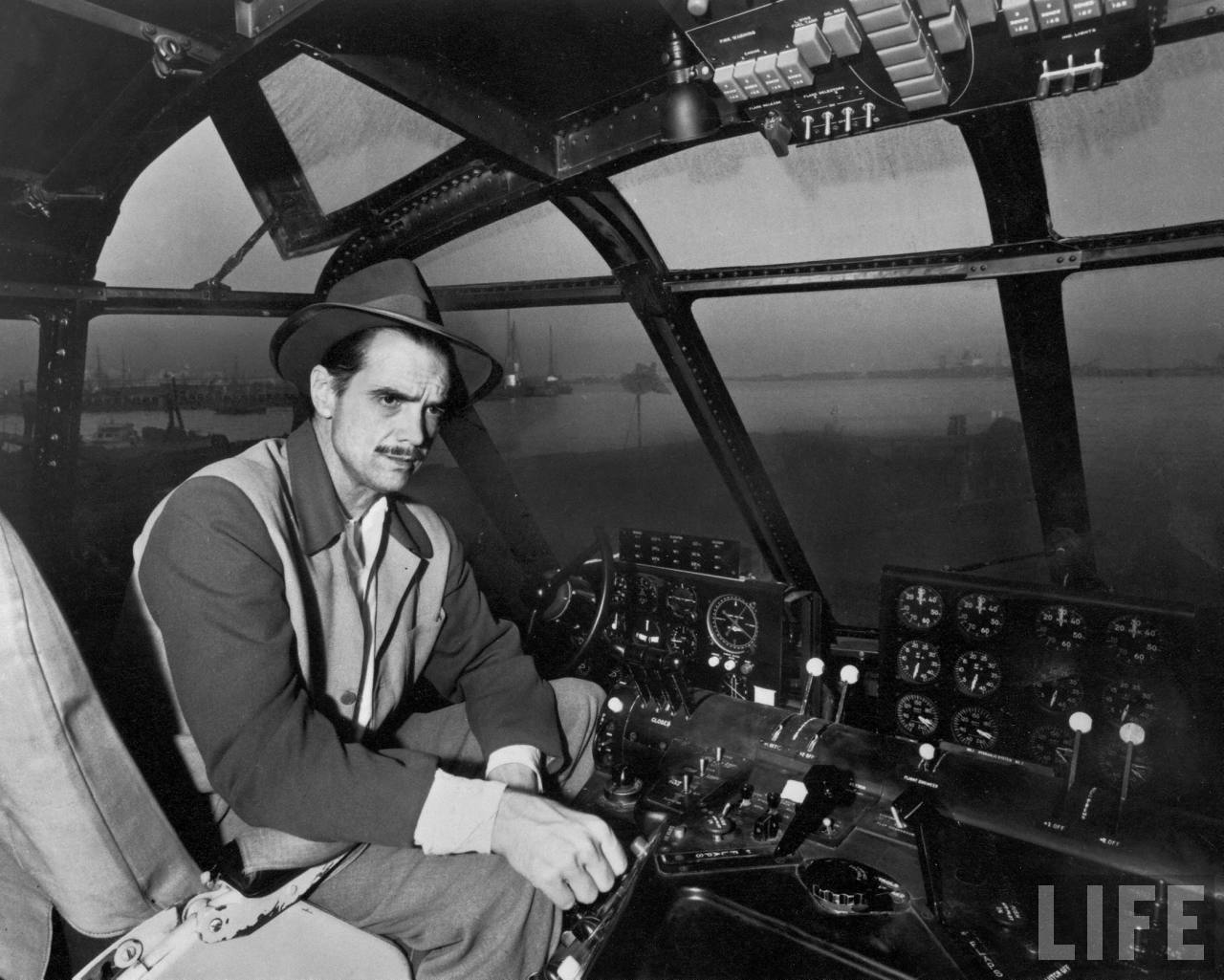
The airplane is on display at the Evergreen Aviation and Space Museum, McMinnville, Oregon.
© 2018, Bryan R. Swopes
Wait. Did I miss something? Why did it never fly again?
Because Howard Hughes was perverse. The airplane was overdue and over budget and militarily obsolete. There had been much criticism in the press and in the U.S. Congress. It was said that it was incapable of actually flying. Hughes flew it to prove that it could fly, and it was then put away. Hughes went on to other things.
The Spruce Goose is currently in the Evergreen Aviation Museum in McMinnville, OR.
It’s size is hard to imagine without seeing it yourself. They have an F-15 tucked under its horizontal stabilizer.
About the size of a 747-400, designed to have a loaded weight of 400,000lbs… and oh yeah takeoff and land in the water.
pretty ambitious idea.
I remember touring it when it was still at Long Beach, next to the RMS Queen Mary. Even being inside it, or standing next to it, it is so huge that it is still hard to take in.
Where can I buy a picture of the Spruce Goose landing or taking off.
Hi, Alicja. I would recommend The McMahan Photo Art Gallery & Archive: http://www.mcmahanphoto.com/ The quality of their prints are tops! You could also try the UCLA Library’s Los Angeles Times Photographs Collection: http://digital2.library.ucla.edu/viewItem.do?ark=21198/zz0002np7z or the LIFE Magazine Photo Archive at Google: http://images.google.com/hosted/life. I have had good luck with downloading a large image and taking it to a quality photo lab, such as The Icon of Los Angeles on Wilshire Boulevard. You get detailed personal service from people (e.g., Bonny Taylor) who are artists in their own right. This allows you to restore or enhance the image, and to select the paper (so many choices!), which can really effect the appearance of the the image. You end up with a work of art, not just a photograph. I love The Icon. . . . Art Resource in New York City represents entities such as the Smithsonian, etc., etc. You can purchase a digital file, for not too outrageous a price: http://www.artres.com/C.aspx?VP3=CMS3&VF=ARTHO1_3_VForm&Flash=1 Getty Images doesn’t sell photos, but licenses images for a specific period of time, with restrictions. You get a digital file and take care of printing it on your end. They don’t really do business with individuals (i.e., you and me) although this can be arranged. The license fees can be VERY expensive. This would be my last choice.
The Spruce goose is absolutely huge A 6 foot tall man or woman can stand inside
The wing as well as change the lightbulb on the tip of the wing in flight
Absolutely mind-boggling the size of this Aircraft has to be seen to believed
I saw it at the aircraft museum in Oregon I went with my dad
It was our last trip together he was A fighter pilot with the RAF during the battle of Britain And didn’t talk about it until the last six months of his life that’s when he gave me all his photos and the stories behind them photos of friends made and lost
During and after the war I miss you every day the past 2007 Rest in peace dad.
Pure genius.. the aircraft just needed more r&d. Should have continued with a more streamlined design…. awesome aircraft.
I saw the Spruce Goose fly on Nov 2 ,1947. I was on the USS Columbus CA74, anchored ion Long Beach Harbor. What a sight o behold.
My late father recounts flying his Short Sunderland flying boat back to Australia from Britain when that landed near the Spruce Goose. They taxied to the giant and parked under its wing. The Sunderland was dwarfed by Howard Hughes’ monster
The Spruce Goose flew in Long Beach harbor not San Pedro. My dad was their and we have pictures
It takes me back to the the 1940 best read this year.
I had the great honor to see the spruce goose are Hercules and Long Beach back in around 1992 it was incredibly large the insides was something else. I also had the privilege to go inside Queen Mary at the same time. Both of these were awesome to see. If anyone has the opportunity to see either or both of these you won’t be disappointed .
How high did the Goose get on its only flight? The photo looks like it is only about six feet above the water, but there is no reference to the height in the comments.
The height of the short hop was approximately 70 feet in altitude in most publications. It was airborne for about 1 mile, before Mr. Hughes let it settle
back on the water. Hughes had to make a quick decision as the 3 mile water area
was rapidly passing underneath the flying boat. If he had not set it down, it would have required a left turn out over the outer harbor and breakwater. As the flight
controls were still experimental (and not all back-up hydraulics were installed)
the safe approach was to pull the engine power back and settle the aircraft back in
the water.